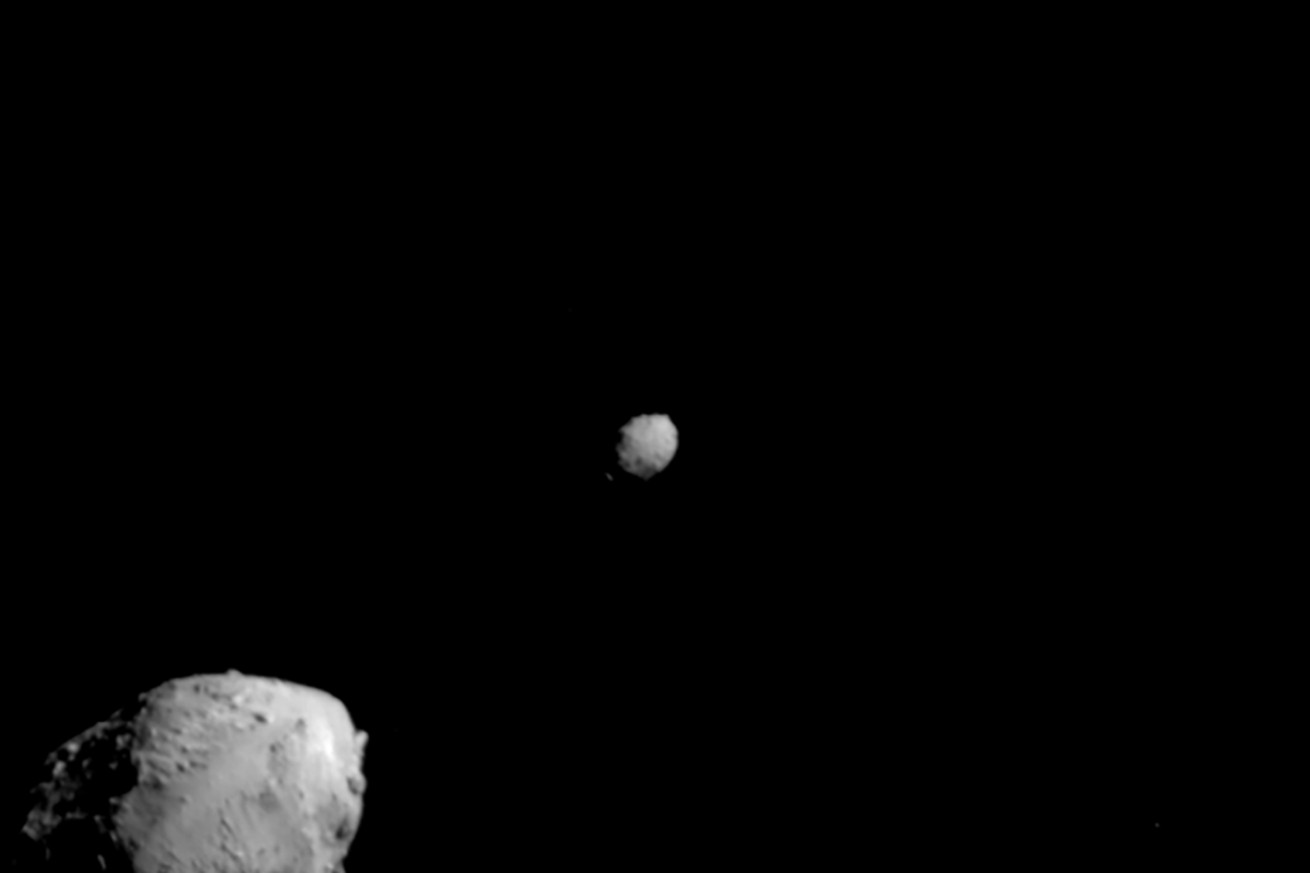
When a spacecraft slammed into an asteroid last month, it pushed it closer to its companion and sped up its orbit by about 32 minutes. It’s a huge milestone for the field of planetary defense; it establishes that it may be possible for humans to significantly change the path of a potentially hazardous asteroid — especially if we have warning that one is on the way.
When the Double Asteroid Redirection Test (DART) mission sent a spacecraft crashing into its surface on September 26th, telescopes on Earth and in space were watching the action. Now, initial data from those observatories have shown that DART achieved its goal. Before the impact, the asteroid Dimorphos took about 11 hours and 55 minutes to orbit its much larger companion asteroid, Didymos. The same trip now takes 11 hours and 23 minutes.
Shaving half an hour off of an asteroid’s orbit is a massive win for the mission, which would have categorized even a 73-second change as a success. Researchers think that one of the reasons for the big change in orbit is that the impact displaced tons of material, creating a dramatic-looking plume of debris in the process. This “recoil” gave the impact an extra boost, NASA said.
There’s still a lot about the impact that will take scientists time to figure out. They’ll be pouring over many more observations to answer questions like: Is there a new shape to the orbit? Is Dimorphos wobbling? How much debris came off the asteroid when we slammed into it at 14,000 miles per hour?
Once they have that information, the modeling will get even more intense; they’ll take the information from the observatories and run it through physics simulations again and again until they have a pretty good idea of what happened. That way, when the European Space Agency’s Hera spacecraft arrives at the asteroid system in a few years, researchers will have a pretty good idea of what it will find.
“All of this information plays into our understanding of what really happened in the experiment. How effectively did the kinetic impact change the motion of the asteroid? How efficiently was momentum transferred? It’s too soon to say; there’s a lot of moving parts in this calculation,” said Tom Statler, DART program scientist at NASA, during a press conference.
That’s all key information for any future mission to redirect an asteroid heading toward our planet — the basic tenant of planetary defense. Dimorphos and Didymos didn’t pose any threat to Earth, but researchers are on the lookout for other asteroids and near-Earth objects that might be hazardous.
As exciting as these early results from the DART mission are, knowing how to move an asteroid is only part of any future efforts to defend our planet from space rocks. The much larger issue is knowing what hazards are out there — and knowing about them as soon as possible.
“This is a four percent change in the orbital period of Dimorphos around Didymos — and it just gave it a small nudge,” said Nancy Chabot, DART coordination lead at the Johns Hopkins University Applied Physics Laboratory.
A similar “small nudge” to a potentially hazardous asteroid might be enough to keep it out of Earth’s path, but the timing would be vital. “If you wanted to do this in the future, it could potentially work. But you’d want to do it years in advance. Warning time is really key here,” Chabot said.
“The single most important factor that we need to know is which ones out there are potentially dangerous, and when might they be potentially dangerous,” said Lori Glaze, director of NASA’s Planetary Science Division. NASA is working on the Near-Earth Object Surveyor Mission, which would specifically look for these kinds of hazards. The mission, which has faced funding difficulties in the latest congressional budget cycles, is considered a top priority of the planetary science community.
Source: The Verge